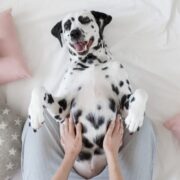Some dogs have a hard time figuring out our puzzles, while other dogs figure them out too quickly! Nina Ottosson’s Tip & Tricks is a series of posts that cover how to make each puzzle game harder for dogs that are quick to solve them, and easier for dogs still getting the hang of it.
How the Dog Brick Works
Place treats or kibble in compartments of the base, under the flip-open lids and sliding discs. Cover middle compartments of the Dog Brick with white bones. The more covered compartments, the harder the puzzle will be.
Let the games begin! Show your dog how the game works and encourage them to find the treats. Dogs are smarter than you think. Sometimes we just need to teach them.

With the following tips & tricks, you can adjust this game to make it both easier and more difficult.
Always start by letting the dog watch you fill the game with treats. I recommend using extra tasty treats the first time the dog plays with a new game.
Making the Dog Brick Easier
Start easy – Hide treats under the sliding discs. Don´t add in the white bone covers yet. Leave some of the sliding discs a little open for the dog to sense the smell and see the treats.

Next step: Hide treats under the flip-open lids. To make it easier for your dog to open the lid, you can tie a rope through the hole on the lid. (Only do this if you are certain your dog won’t try to ingest it. Always supervise.)
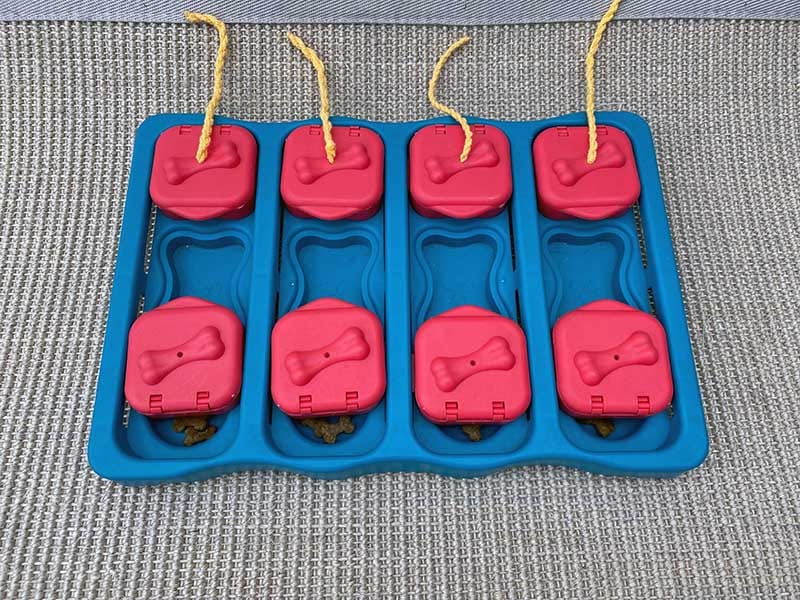
Play together with the dog, sit next to, and help them understand how the game works.
When the dog understands how to slide the discs you can start locking one disc with a white bone cover, if he doesn´t understand, many dogs can learn visually if we show how to open the lids, lift up bone covers, and slide the discs to uncover the treats.
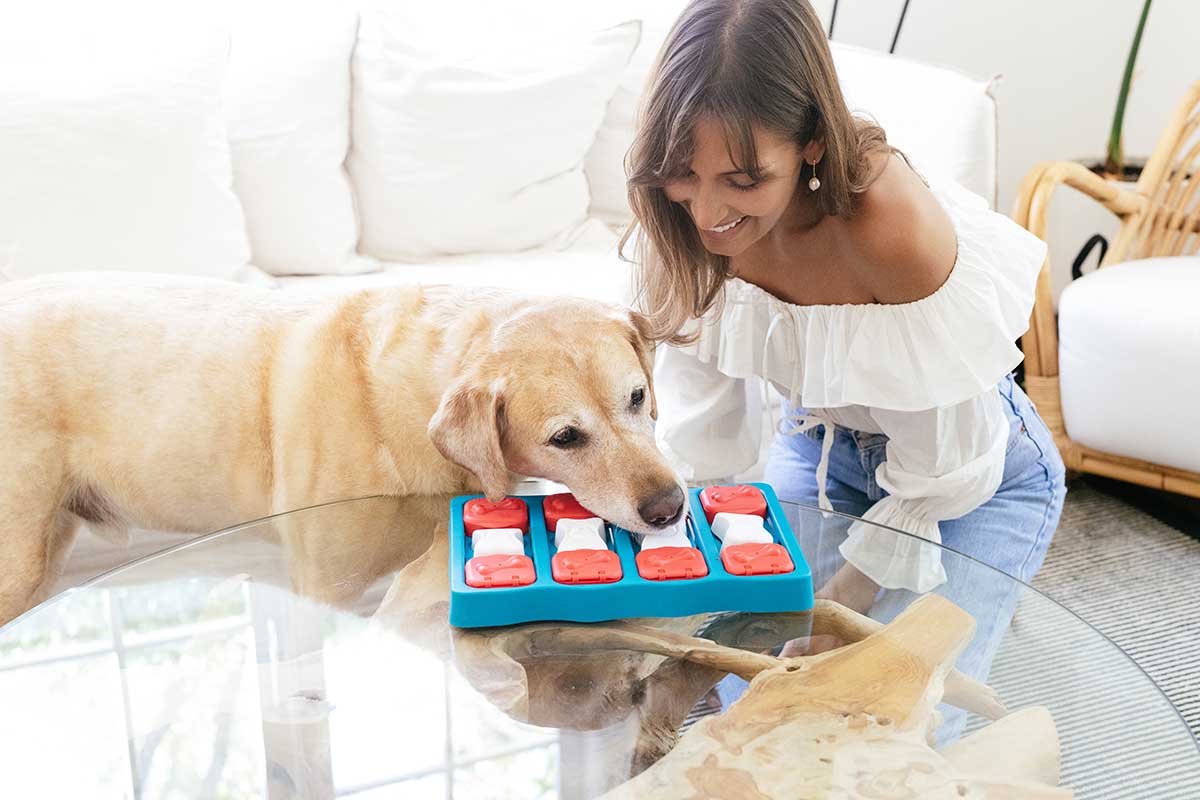
If the dog has difficulty lifting the white bones off, you can make it a little easier by tying a rope through the hole in the bone, (with a knot on the bottom and top of the bone), so that the dog can lift up the bones with the rope.
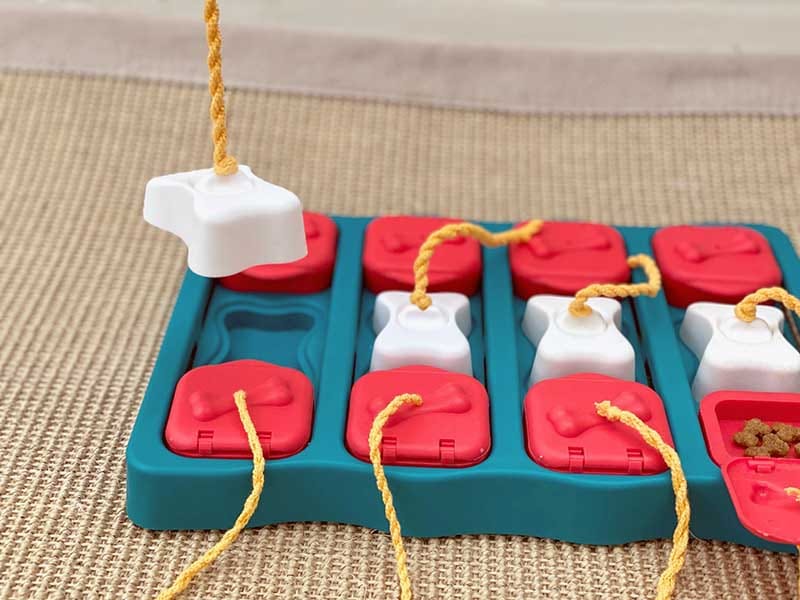
To help the dog understand how the game works, you can pull on the rope a little to help the dog see and smell the treats, repeat several times.
Once the dog has figured out how the Dog Bricks works, you can gradually remove the “training wheels”/ ropes.
Tip: The red snap on and off lids are designed to come loose. If the dog presses too hard on them, they are then easy to attach again.
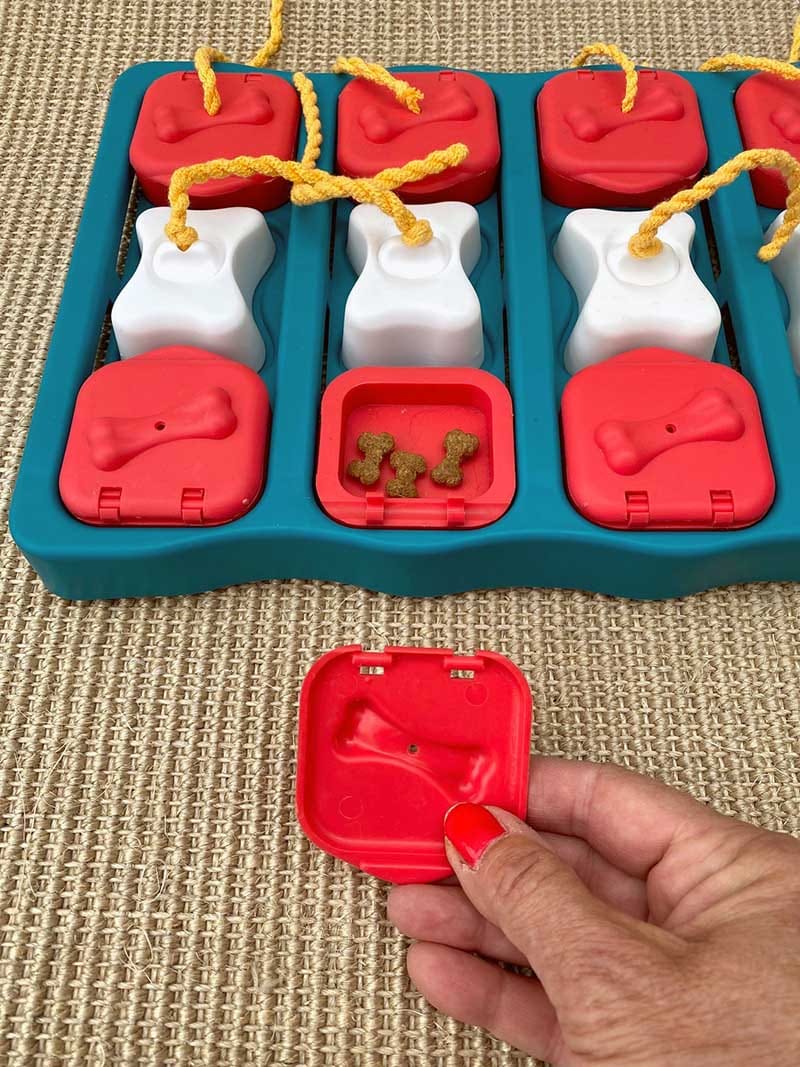
Practice Training with Dog Puzzles
While you hide treats in the game and/or until you place the game on the floor, you can practice commands. Try to teach the dog to sit or lay down and wait for you to say go ahead. Dogs learn the usual commands like wait, sit, and release incredibly fast if doing it in positive forms, and treat puzzles are very positive in a dog’s world. This also strengthens the bond with your dog.
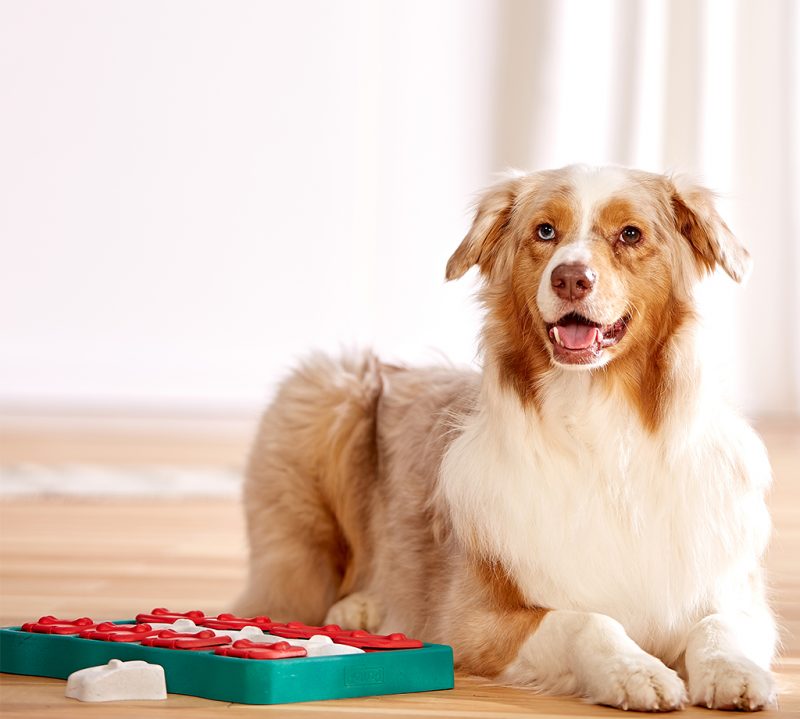
Making the Dog Brick More Challenging
Freeze it: place your dog’s favorite snacks with water or natural yogurt in all compartments and let them set in the freezer. A frozen puzzle will keep your dog busy for a longer time.
Dogs love frozen puzzles! These are especially great for energetic dogs or if your dog is convalescent or not allowed to move freely.
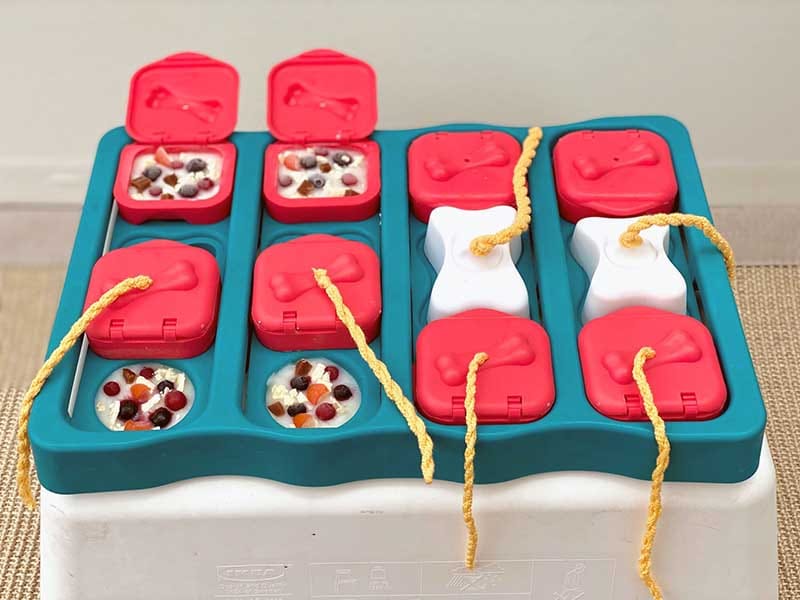
Cover it: Cut out pieces of cardboard and place them over the treats, adding an extra layer of difficulty. The dog must remove both the bone and cardboard to reach the treats.
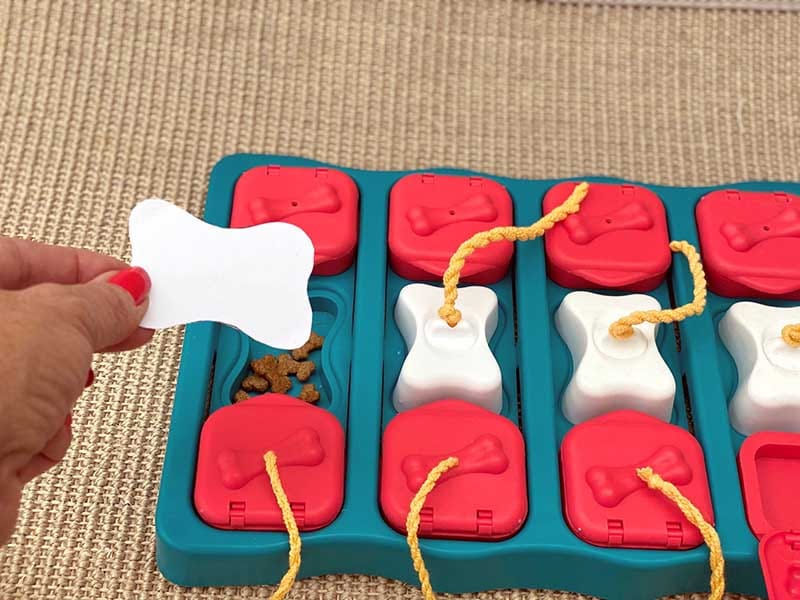
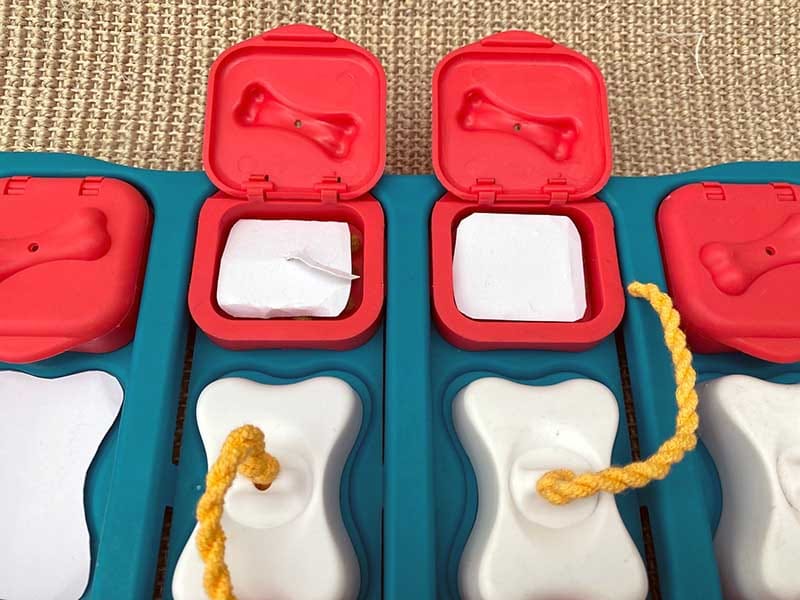
Always supervise your dog to ensure they do not eat the cardboard or puzzle pieces.
Elevate it: Place the game higher up, on a stool, box, or chair, which is great for:
- Rough pawing dogs to provide a calmer play.
- If you have a pawing dog, it will be a little harder to only work with the nose, thereby upping the challenge.
- If your dog is convalescent and not allowed to move freely.
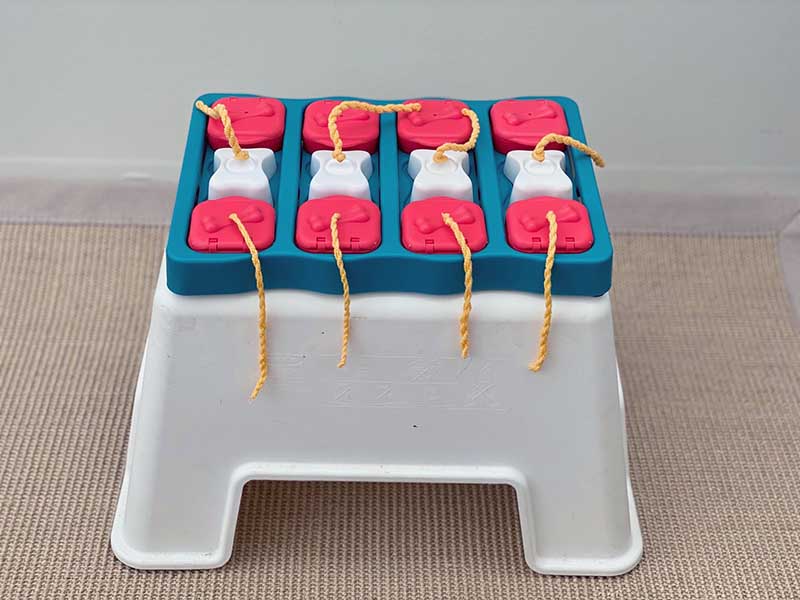
Extra Dog Brick Tips & Tricks
Place the game in a soft dog bed: If your dog is a tough or a strong paw player, it allows a calmer play.

For fast-eating dogs: Use the puzzle as a slow feeder. Serve the dog’s food in the game and let the dog work for the food. The compartments are big enough for a meal.

Puzzle race: If you have several games, you can make a puzzle race by placing several games in a row, and just put a few treats in each game.
Alternatively, you can hide the games in different rooms or in the garden. Sometimes I hide them under towels and blankets. It’s much appreciated by dogs, especially on rainy days.
For anxious dogs: Puzzle games can be used to distract dogs in anxious situations such as fireworks, thunderstorms, etc.
Play together! Playing together with your dog strengthens the bond and builds your relationship with your dog.
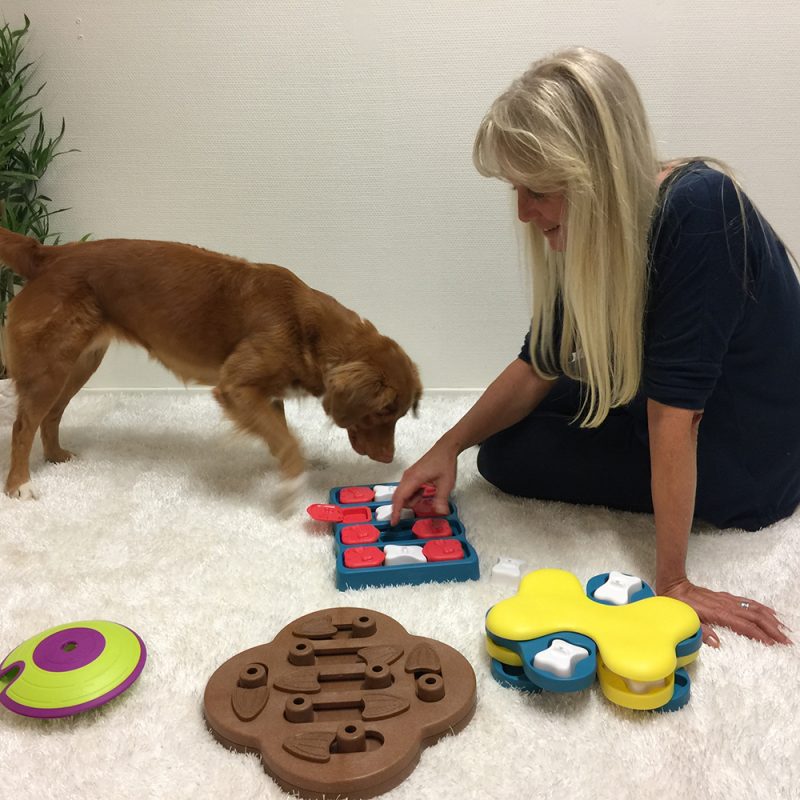
Puzzle games prevent and reduce boredom and prevent behavior problems.
The games are great to activate older dogs that are still mentally healthy.
Cleaning the Dog Brick
You can snap off and on the sliding discs for easy cleaning. Soak the game in warm water and soap, then clean the game with a sponge, or rinse the game with the shower. I use a sponge and a spray bottle that I mixed with soap and water.

Playing by the rules
Nina Ottosson dog puzzles are focused on challenging the dog’s brain. These games are not like a regular toy, and they are not indestructible, which is why we also advise close supervision, so the dog plays the right way, especially until you know how your dog works with the games. Then you can make your own decision on how you want your dog to use the games.
Playing with puzzle games is fun! Dogs love to work for food & treats, and because of that, it´s very important to supervise, especially with puppies and young dogs. It´s important to teach the dog how to use them and to not let the dog chew on the puzzle or turn it upside down. As soon as this starts happening, you need to stop the play.
Safety first!
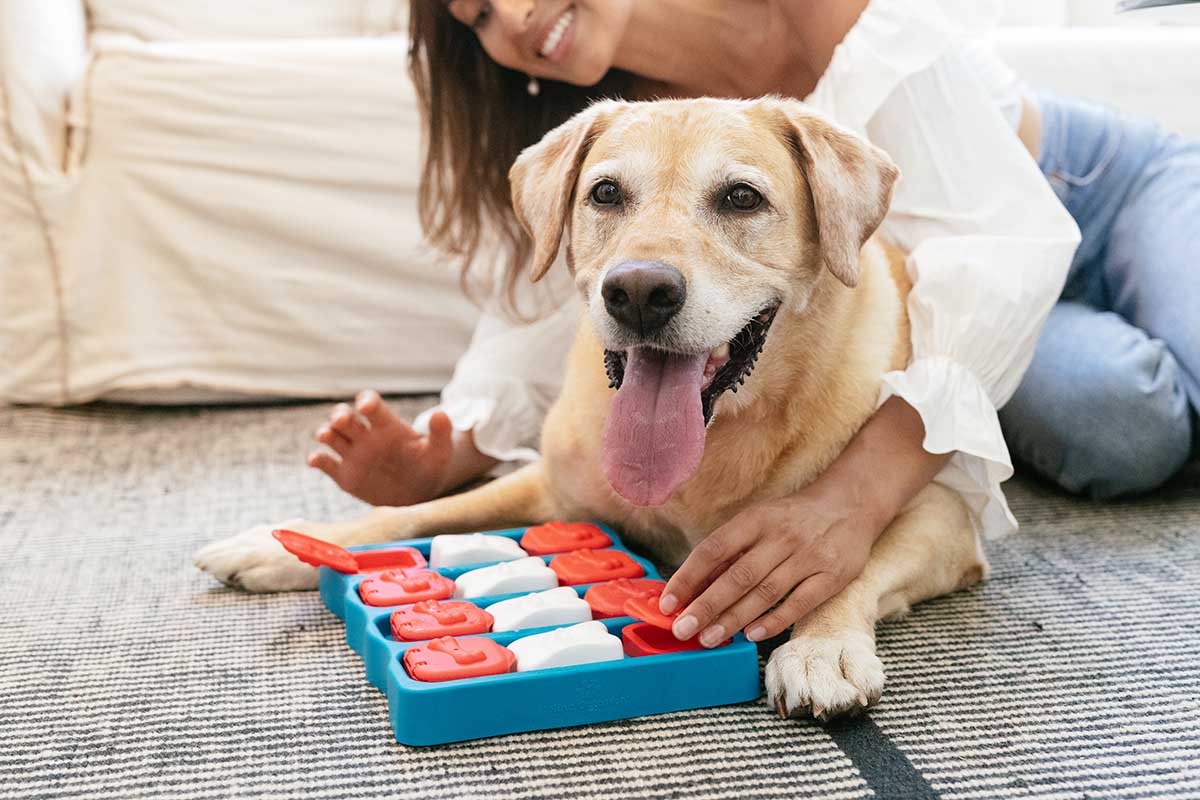
When choosing a toy, make sure to choose an appropriate size/style/level for your dog. No toy or game is indestructible. ALWAYS supervise your dog closely, teach your dog how the game/toy works. Do not leave the dog alone with a treat game/toy, do not let the dog chew on the game/toy or pieces. Inspect regularly for damage and remove if broken, or if parts become separated, as serious injury may result. For dogs only, not a children’s toy. When empty, store until next supervised use.
I hope you will have a lot of fun playing puzzle games with your dog.
// Nina Ottosson
For more Tips & Tricks from Nina, check out:

